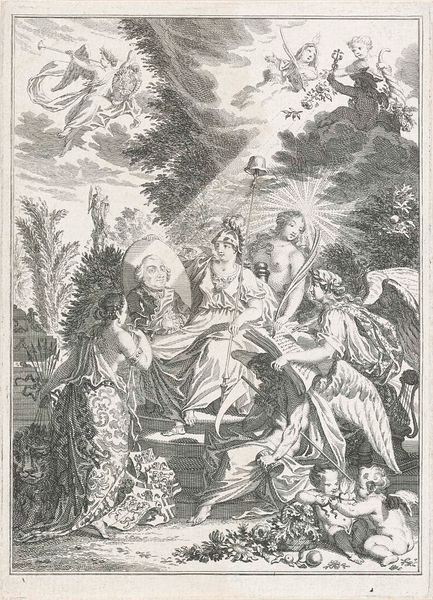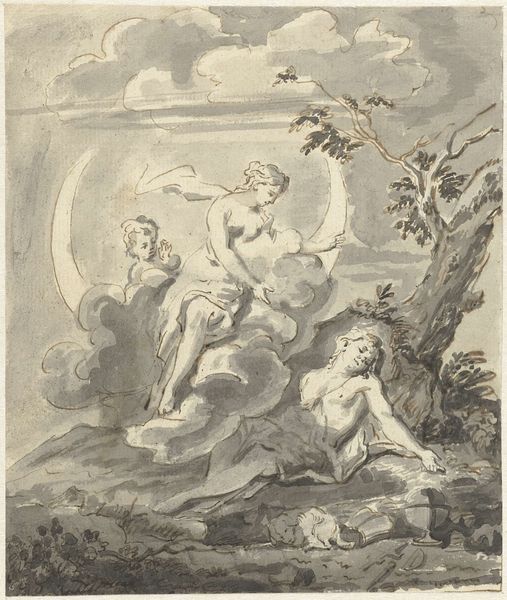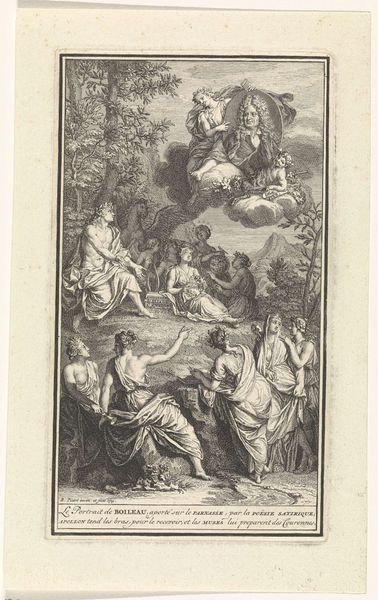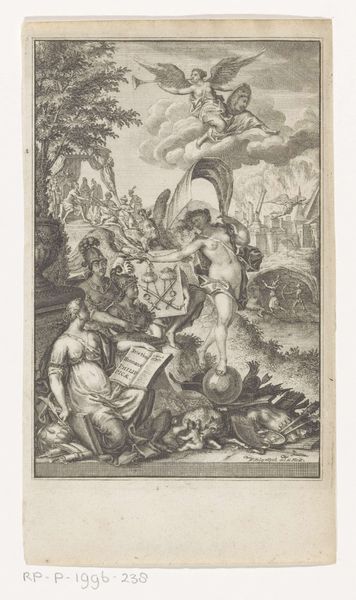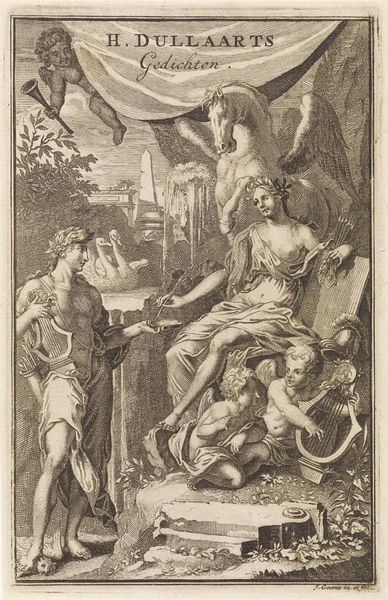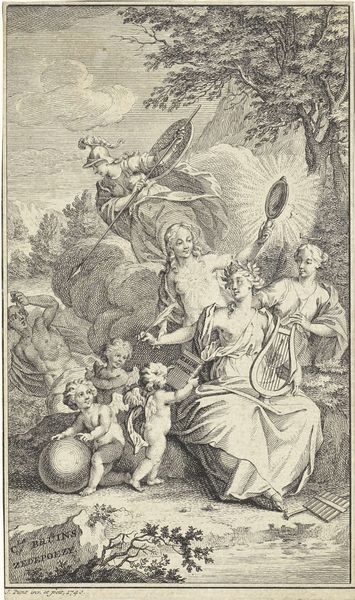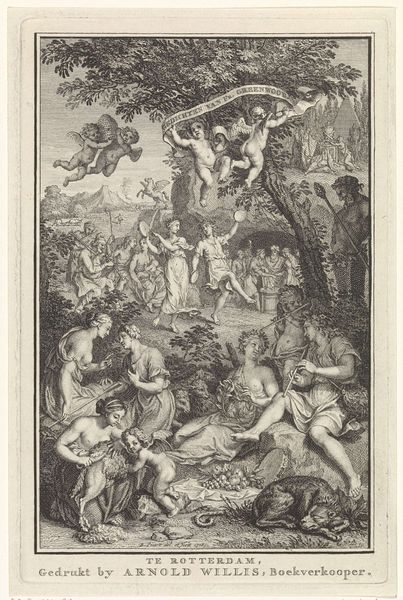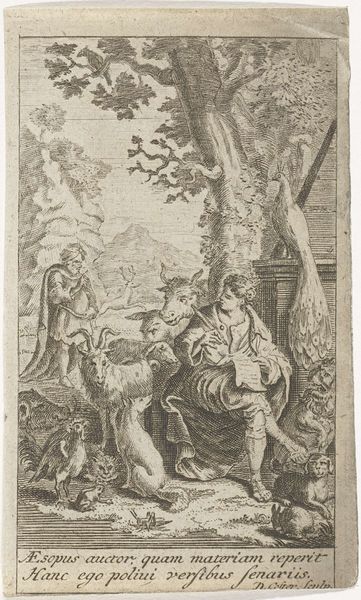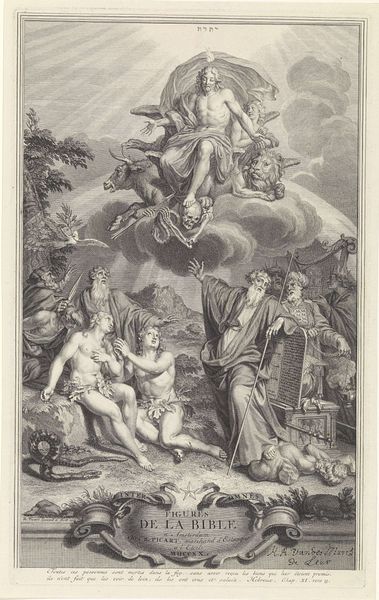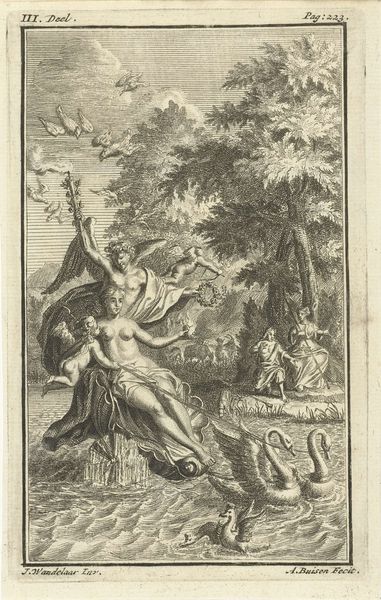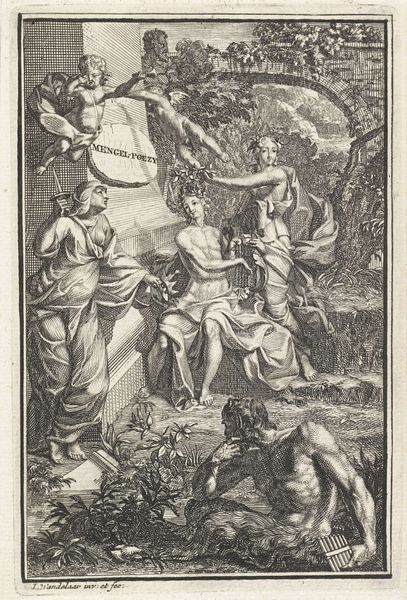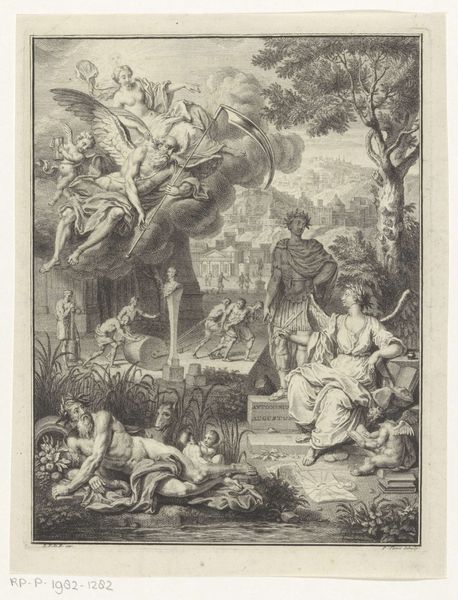
print, engraving
#
allegory
#
baroque
# print
#
landscape
#
history-painting
#
nude
#
engraving
Dimensions: height 185 mm, width 143 mm
Copyright: Rijks Museum: Open Domain
Curator: Jan Wandelaar’s engraving, dating back to 1725 and titled "Venus on a chariot pulled by doves," certainly presents a spectacle. The composition is elaborate, yet strangely unbalanced. Editor: Yes, my first impression is of something excessively ornamental! There’s so much going on—nudes, putti, landscapes, allegorical symbols—it feels almost suffocating in its complexity. The overall effect feels incredibly staged, evoking the elaborate performances common in baroque courtly culture. Curator: It is undeniably theatrical. Consider how Wandelaar uses line and shading to delineate form. The intricate detailing on Venus’s drapery and the delicate rendering of the doves contribute to a refined texture. Also note the formal vocabulary employed to highlight the mythological significance embedded within its imagery, typical of its era. Editor: The inclusion of Africa prominently displayed on the globe beneath the chariot strikes me. The artistic representation of geography became increasingly common to visually assert political and economic control during colonization, serving as a potent display of power. One could ask: what implications does presenting Venus over the African continent have in that context? Curator: An intriguing consideration! On one hand, we can discuss the classical trope, read the print as a celebration of beauty and harmony. However, when one analyzes the contextual history that is emerging at this time and space, those traditional notions were inherently tied to imperial ambitions and structures of exploitation. Editor: Absolutely. These displays, though steeped in classical symbolism, become laden with contemporary meaning—particularly the validation of dominance, framed through artistic expressions celebrating empire. It's this intricate weave of myth and historical context that renders pieces such as this endlessly thought-provoking. Curator: It underscores the imperative need to consider all historical and formal aspects when deciphering and evaluating art from centuries past. It is how these dual meanings converge and conflict that make our analysis more nuanced and inclusive.
Comments
No comments
Be the first to comment and join the conversation on the ultimate creative platform.
